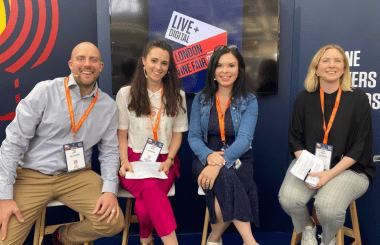IWSC Market Insight: social media marketing
- Introduction - How social media has changed marketing
- What do consumers expect to see from wine producers on social media?
- Which social media platform is best?
- Types of content
- Forming a social media strategy
- Monitoring your results
- Costs involved
- How much time should you spend online?
- Working with influencers and collaborations
- Key takeaways and top tips
Introduction - How social media has changed marketing
Social media has shifted communication and is fast replacing traditional marketing. Every person with an internet connection has been given a platform to share their voice. It's free for anyone to use and suddenly we are able to project our voices across the globe and share bottles with strangers in other countries.
This has meant that media and marketing has been socialised. Whilst we are still seeing mass communication e.g., a celebrity in a shampoo TV commercial, seeing one advert doesn’t convert you to becoming a customer. But seeing reviews and recommendations from the people that we follow, helps us to make purchasing decisions.
New marketing objectives aren’t about how to advertise to your target audience but how to elevate them to be involved and to become advocates. When people buy your products, they are buying a slice of your life and then sharing it with their own communities. As Carlos Gil says in his book, The End of Marketing, (2020) consumers don't want to be sold to, they want to be a part of something, a community, a new movement.
Unfortunately, we are still seeing businesses that consider social media as a secondary medium for marketing. Furthermore, because it’s free to use, we see companies that are reluctant to put money behind it, when once upon a time that budget would have been spent on traditional advertising or print.
What do consumers expect to see from wine producers on social media?
The power is now firmly in the hands of the consumer, and they like to get to know a brand or hear a good review before they make a purchase decision. Having a social media account helps cold leads to get through the ‘know, like and trust’ phase of the marketing funnel. They have stumbled across a new account but need to take some time to get to know the brand before making a purchase. They might look into brand values, sustainable practices, organic agriculture and who else drinks the wines. According to a report from Hubspot, social media users are 71% more likely to purchase products and services based on social media referrals.
Furthermore, millennials and Gen Zs have become extremely aware of being advertised to and value authenticity highly. Most carry an inbuilt inauthenticity radar and prefer to see people being their ordinary selves. Understandably, being comfortable on camera is quite difficult for many and can take some practice.
Which social media platform is best?
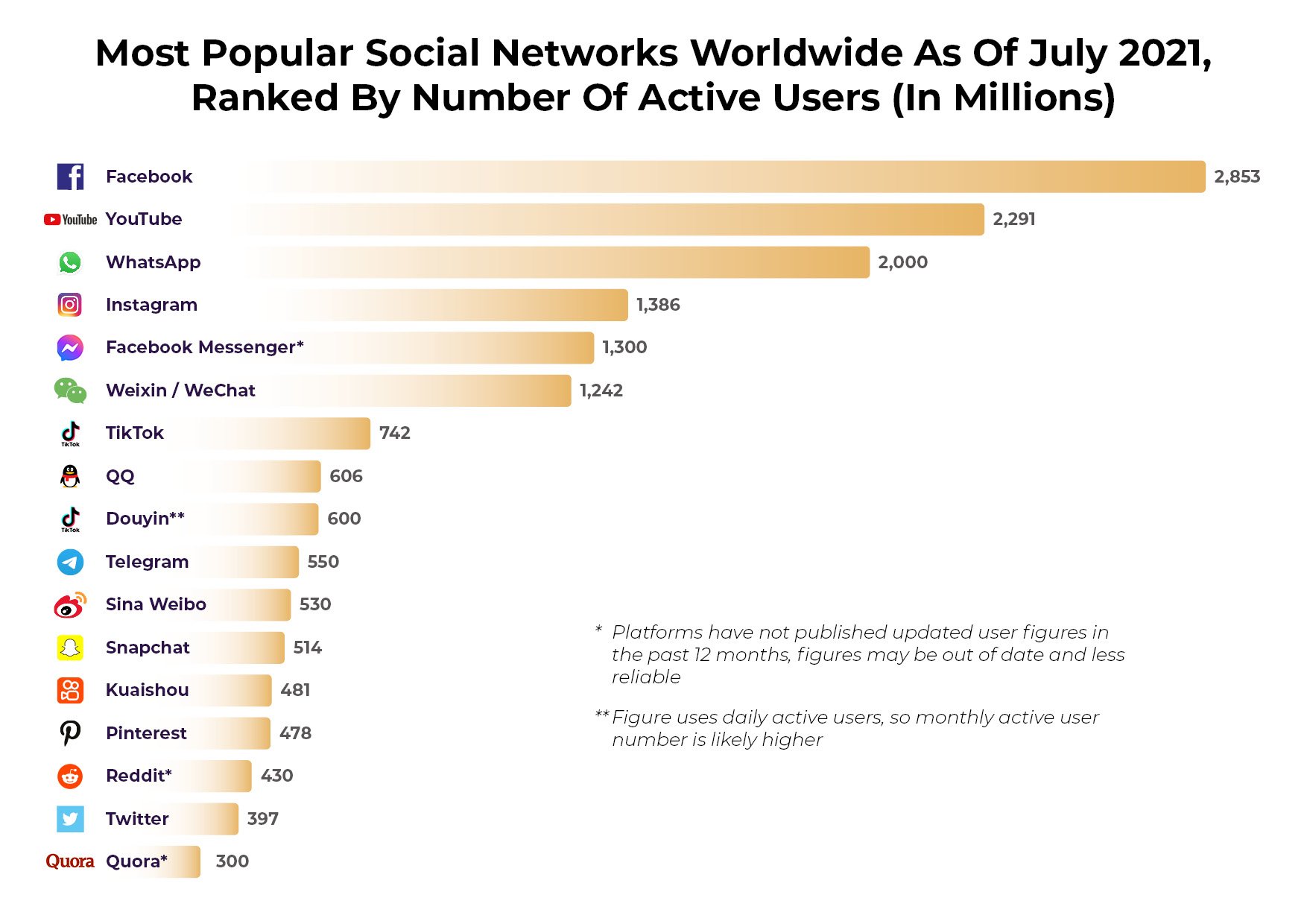
There are 50.89m social media users in the UK (Statista) and 57% of the world's population use some form of social media (Hootsuite). But different platforms tend to attract different demographics. So, it’s important to consider where your target market is.
In terms of wine, we can think of Twitter as being the place where the trade hangs out. Here it is possible for small businesses to connect with well-known people like wine journos, MWs and business owners. Twitter is fast paced and always trending.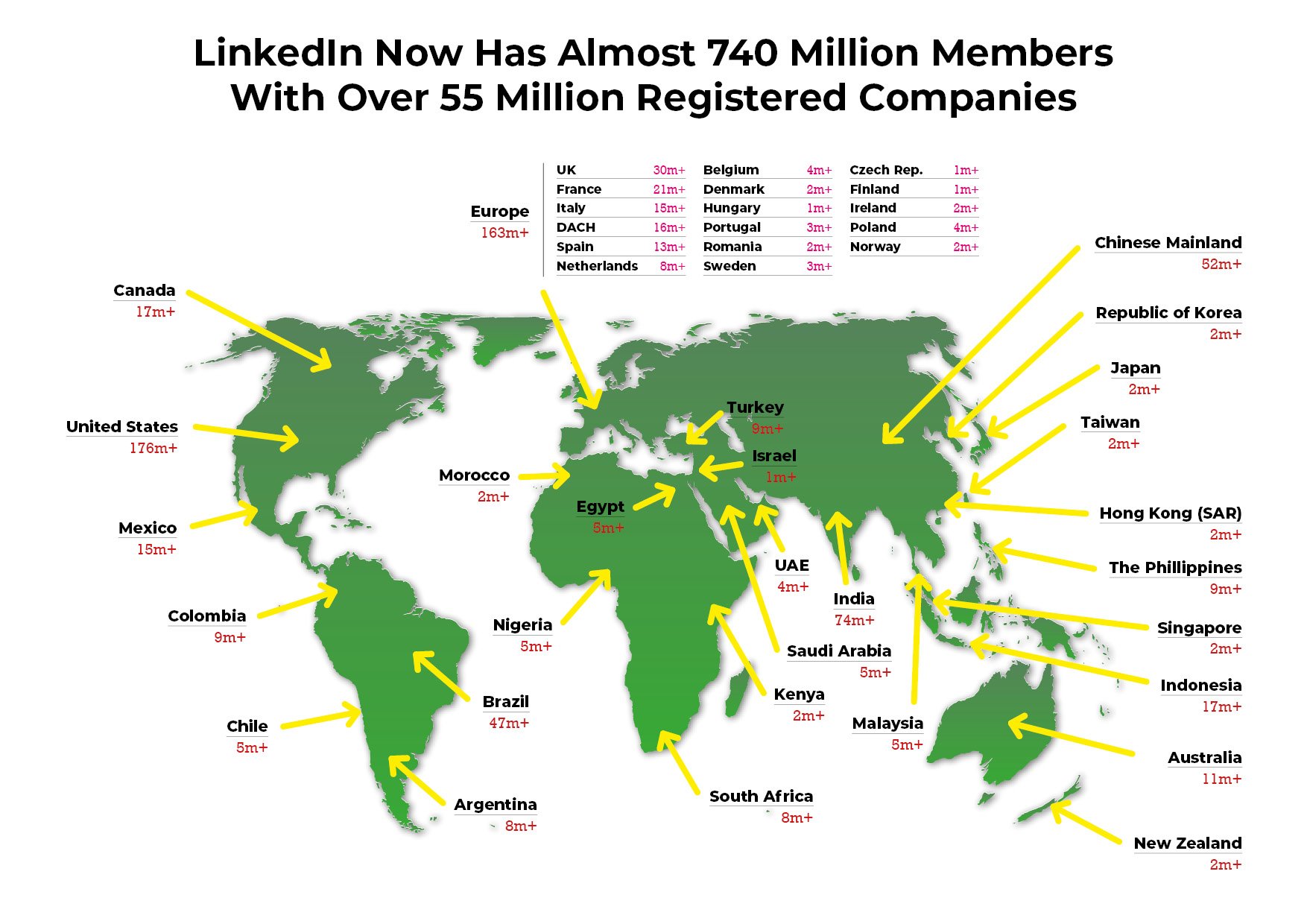
LinkedIn is seen as the service-based platform, with research from Hubspot declaring that LinkedIn is 277% more effective at generating leads than Facebook and Twitter. However, that doesn’t mean it’s not good for product-based businesses. In fact, it’s also the place to find the spirits trade. The nature of the platform allows you to position yourself as an authority in your niche by posting relevant articles self-authored or by others to demonstrate your expertise.
Instagram (and Facebook) can be thought of as the B2C channels and offer data insights so that you can easily see what content performs the best. Instagram is particularly good for retail because users log on expecting to be sold too. Which makes it ok to put bottle prices on there too, there’s no need to keep it a secret if you want someone to make a quick purchase. Unfortunately, the shop feature is not available for alcohol sales, so you still have to send people to your e-commerce URL.
So, what about Facebook? Many people see Facebook as the original platform that people have moved on from. But Facebook is still the biggest platform with 2.797 billion users compared with Instagram which has 1.287 billion, (Statistica). Each brand will be targeting different audiences and platform demographics will be different for each country so if you’re unsure about where to concentrate your efforts, it’s worth taking a look at how your competitors are doing on the different platforms.
Finally, is it worth going on TikTok? The platform dedicated to streaming short videos is the first major social media app to get Facebook in a fluster in years, so it’s definitely not one to wave off to Gen Z. Just a couple of years ago, there were only a handful of wine accounts on TikTok, now there are hundreds. At this point there is no shop feature but it’s currently being tested along with posting stories. It’s definitely worth investigating if you plan to have videos as part of your content plan.
Types of content
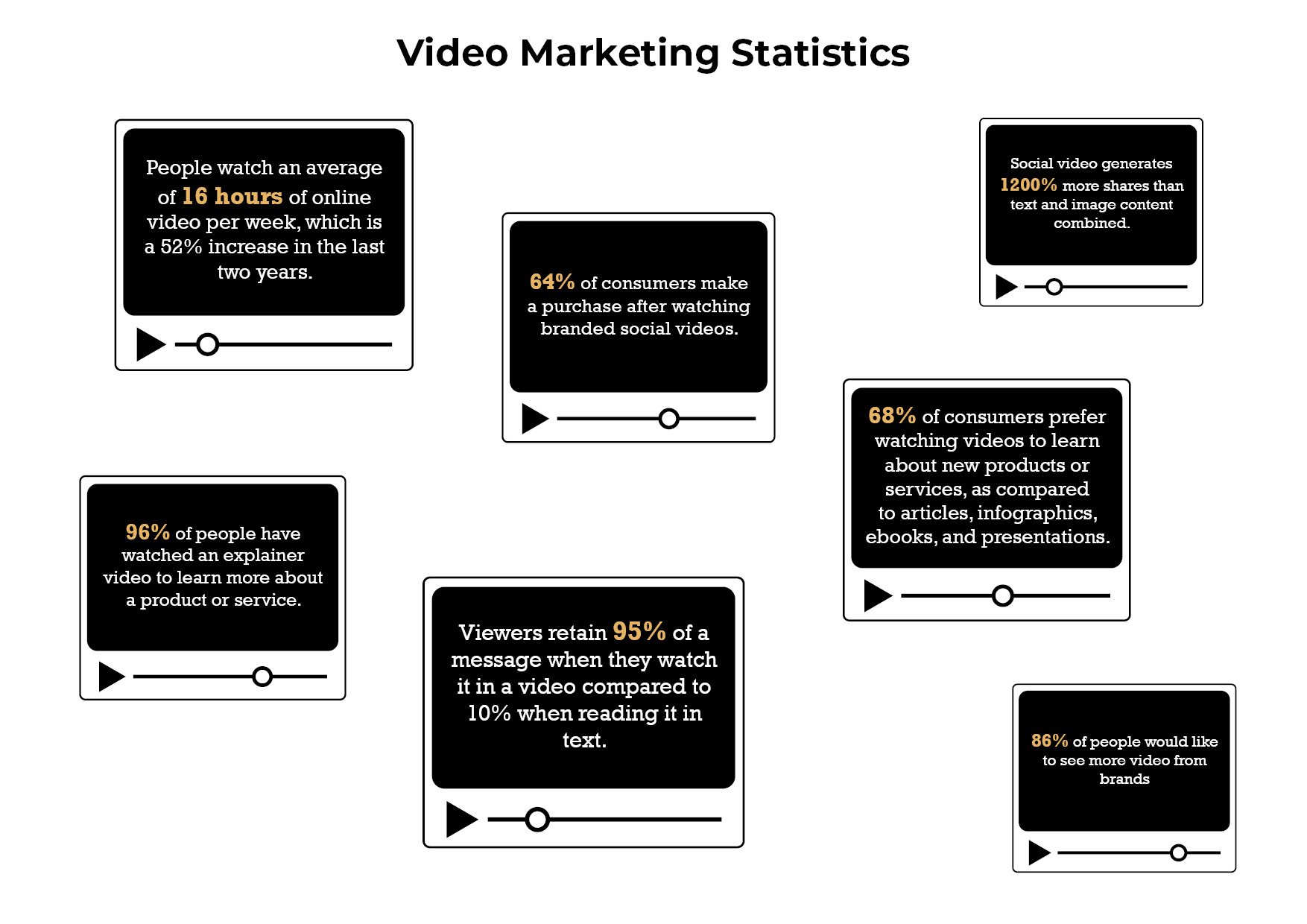
At the end of June, Adam Mosseri, the head of Instagram declared that it is no longer a photo sharing app. TikTok and YouTube are big competitors and the app must evolve to stay relevant. Videos are in the lead when it comes to content performance, so if you haven’t started making video content, start now.
LinkedIn and Twitter are great for sharing links, either noteworthy articles or ones that lead people to your website. On these platforms it’s good marketing to position yourself as the go-to person and expert in your niche.
As Facebook and Instagram tend to be B2C channels, it’s important to understand your customer and the type of content they would like to see. Humans think about themselves first and everything they do in life is in order to survive and thrive, (Building a Brand Story, Donald Miller, 2017). So rather than talking about how great you or your product is, you need to think about how your product makes the consumer's life better. Showing that you have a good presence on these channels will in turn demonstrate to the market that you’re in demand. So, they’re not to be overlooked for those specialising in B2B.
Forming a social media strategy
Most likely your overarching goal is to increase sales so, with this as your starting point it’s time to consider your objectives. Social media and other forms of content marketing aren’t about making quick wins, it’s a long game of getting people onside who will continue to follow and buy from you. Bearing in mind that people need to go through 7-10 touch points before purchasing; consider how you will move people from not knowing about you to clicking ‘buy’.
With this in mind, content should center around brand awareness followed by building trust and helping people with their purchase decisions, this could be in the form of a customer review. Then it’s time to find that zero moment of truth, what will make them convert?
If for example your goal is to increase sales online, you should concentrate on getting people from your social channels to your website. This is why so many retail sites offer a 10% discount code on first orders with an email sign up. Not only have they dangled a carrot, but you’ve hit another touch point and they can now interact with you via your inbox too.
As well as having a content plan, you also need to consider how you will grow and activate your community. Engaging with your customers is just as important as posting. This, plus collaborations and making shareable content is how you can organically grow your following.
Don’t know what to post about? It’s time to map out your content pillars i.e., topics that you will post about to get your customers onboard. If you’ve already outlined your USP (unique selling point) and brand values, this will make it easier. It’s also a good idea to have a thought-shower with your team to identify barriers to purchasing for your target audience.
Monitoring your results
I’m sure most people have heard of setting S.M.A.R.T. goals and KPIs before, but what does this mean in terms of social media? KPIs, (key performance indicators) are metrics that allow you to measure your performance and track ROI (return on investment). By making S.M.A.R.T. KPIs your objectives will be realistic and help you to stay focused. It’s too easy to head off and start making content because an idea popped into your head.
KPIs might be different for each channel and different campaigns. To further explain, let's say you are setting the objective of increasing brand awareness on Instagram.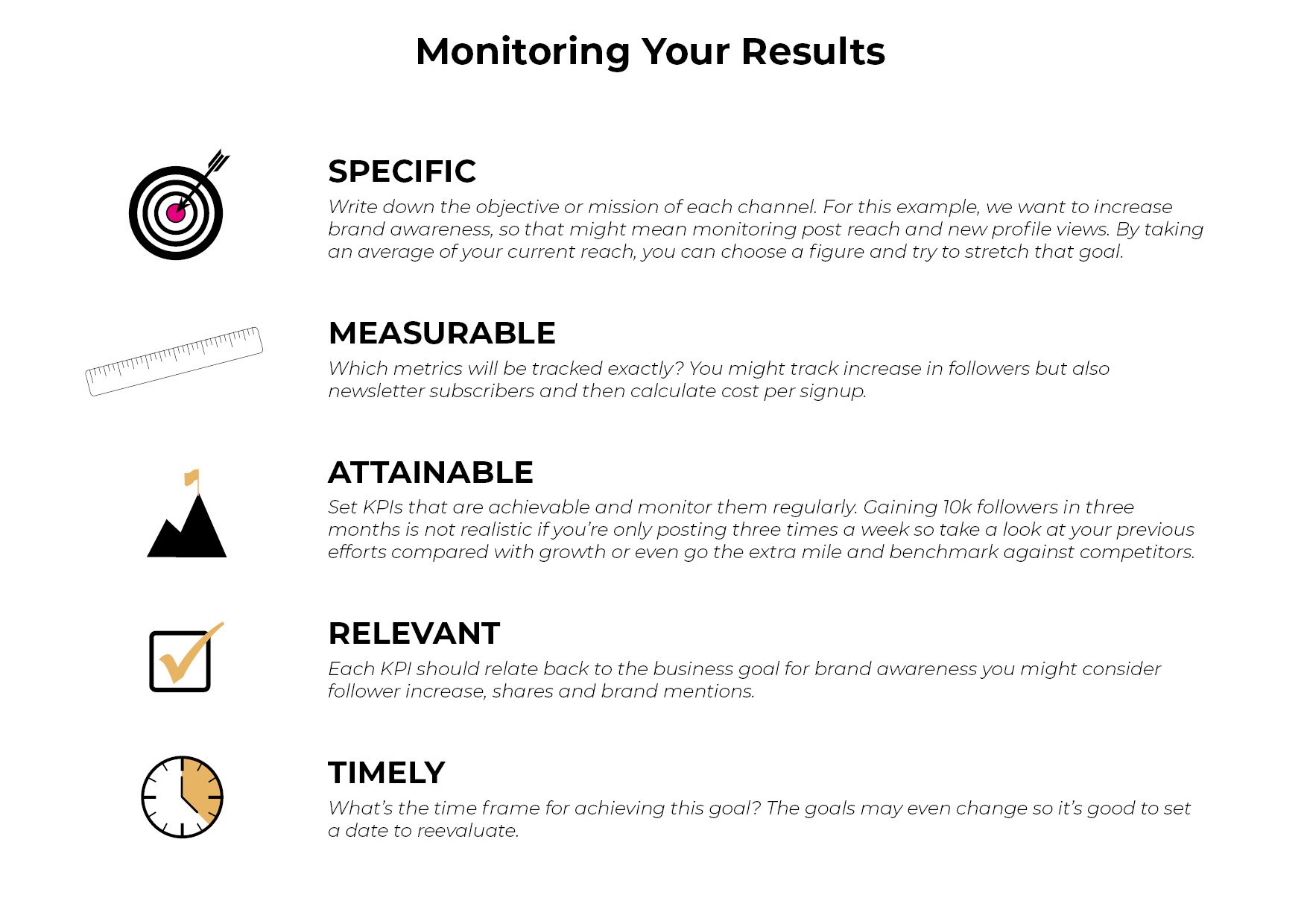
As mentioned previously, different channels have different audiences and therefore you may have different objectives and KPIs for each channel. For example, your focus on LinkedIn might be to build warm leads.
Costs involved
Whilst it might not be possible for many producers to afford a social media manager there are options to consider. As social media is so accessible to many, there are many freelancers or even people like me setting up digital agencies from home who you could pay for a day a week or in some cases even less than that.
If that’s still too expensive, then I recommend investing in creating social strategy alongside some social media training. This will save you time in the long run because you will develop clarity in how to achieve your goals and instead of scrambling around for something to post about, you will know what the next piece of content needs to be.
How much time should you spend online?
Having a clear plan will mean you know what content to create and when, and you can schedule time to make it in your calendar. It’s also important to spend time engaging with your community. Before you log into one of the platforms, decide exactly what you will be logged in to do and how long you will spend there. The apps are designed to make you fall down rabbit holes and lose track of time! I recommend spending around half an hour a day as a minimum checking into your accounts and ‘socialising’. If you can do more, even better.
For both Facebook and Instagram, it’s ideal to post once a day. But it’s not worth posting for the sake of it or your community may drop off if your content isn’t interesting. So, if you can only make three great posts a week then so be it. But try not to do less than three. You should also try to make a story every day. This shows you’re active even if you’re not posting. Plus, it can be candid and in the moment.
Twitter moves quickly. Buffer recommends posting between five to twenty times a day, but never more than once an hour! But Twitter moves fast so you can repost your most successful tweets, for example any previous blog links back to your website that performed particularly well.
On LinkedIn it’s recommended to post three times a week. However, despite having 260 million monthly users, only 1% percent of them are posting (Kinsta). This means if you post just once a week you’re ahead of the curb. Not only that but I regularly see posts in my feed that are a week old, which means your content will hang around for longer.
Working with influencers and collaborations
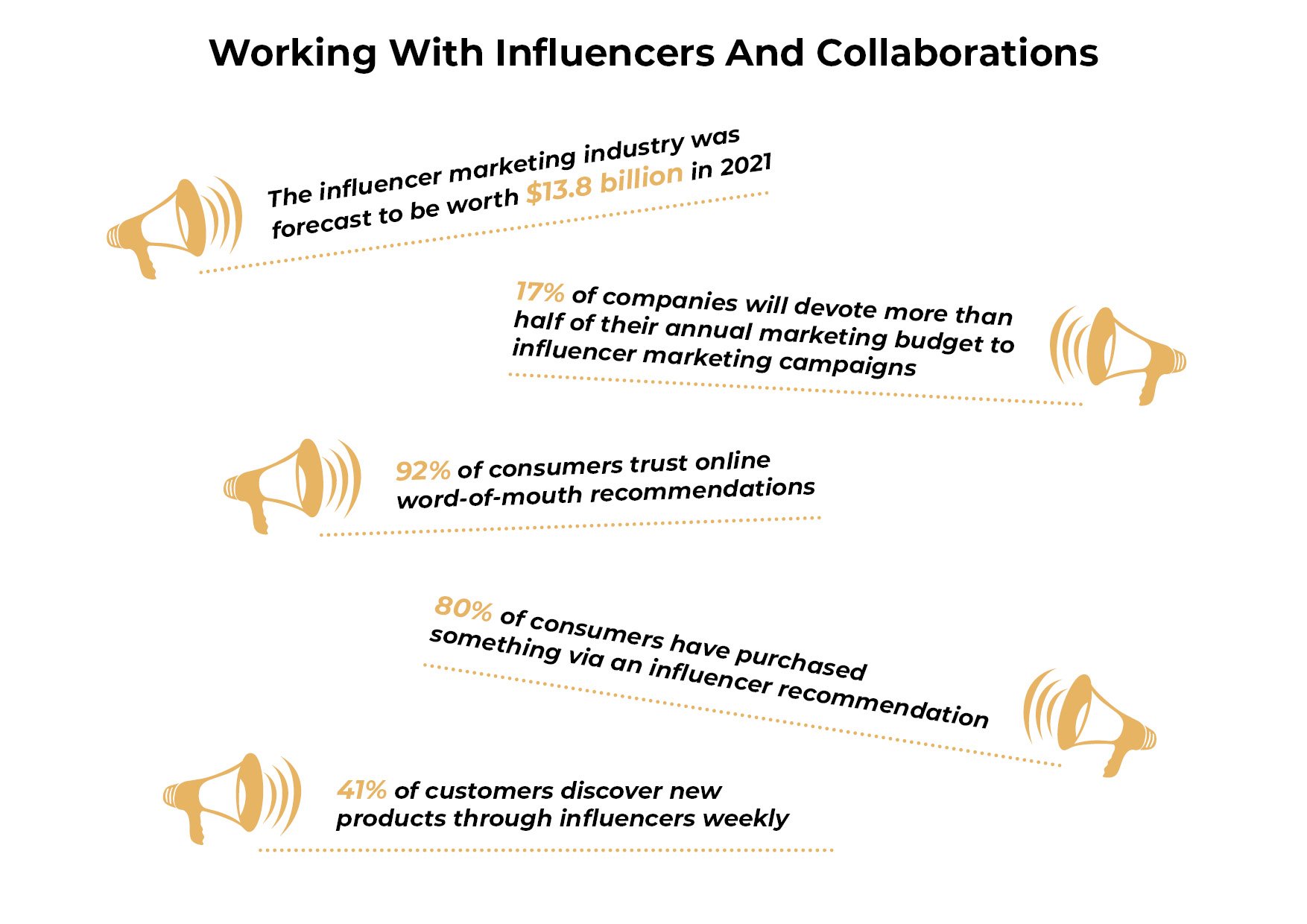
A recent survey by Media Kix found that “89% of marketers say influencer marketing ROI is as good or better than other marketing channels”. Working with influencers has two benefits, the first is getting your product in front of a new audience, the second is about using the psychology of social proof to help potential customers make a purchase decision. Social proof comes in forms such as reviews on Trip Advisor, to customer testimonials on landing pages. When we are unsure of what to do, we look to experts, friends and even celebrities to guide us.
Rather than sending free samples out and hoping for the best, it’s better to consider what you’re hoping to achieve and then choose who to work with carefully. To start with, make sure it’s on brand, do they hold similar values to you, and does it make sense for the audience that you are trying to attract?
Can you measure success? Take advantage of a free trial with social management software such as Hootsuite and monitor your brand mentions across different channels. If it’s a paid partnership then you can ask the creator to use a trackable link and track how many people clicked through to your website, plus ask to see their insights for the post.
Finally, if you’ve found someone that you like working with, consider longer campaigns or even using them as a digital ambassador, this shows authenticity in the partnership. This could take form in affiliate marketing, monthly posts or even virtual tastings. Make sure you’re building genuine relationships with your collaborators too. A healthy relationship means they are likely to continue to recommend you well after the collaboration has finished.
Key takeaways and top tips
- Record videos. Video content performs the best on every platform and is set to grow even more. So, if I haven’t said it enough yet, start making videos!
- Know your target audience. There is a saying in marketing that when you try to speak to everyone you end up speaking to no one. So, find your highest value audience and then center your content around them. This will help you infinitely with knowing what to make content about.
- Consistency is key. Staying on brand means you stay on target for reaching the right customer and posting regularly aids you to build momentum. Setting realistic goals about how much content you will create means you're more likely to achieve those goals.
- Plan in advance. One way to achieve consistency is to make a content calendar and then use third party software to schedule posts in advance. You can use the Facebook Business suite and Tweet Deck to do this for free. On Tweet Deck, you can also set up various streams to easily follow key words and certain accounts.
- Ads. Ads should be seen as a way to accelerate a marketing process that you already have in place, and you know is working. i.e., once you have mapped out the customer journey of how you will nurture a stranger from not knowing about you to making a purchase.

